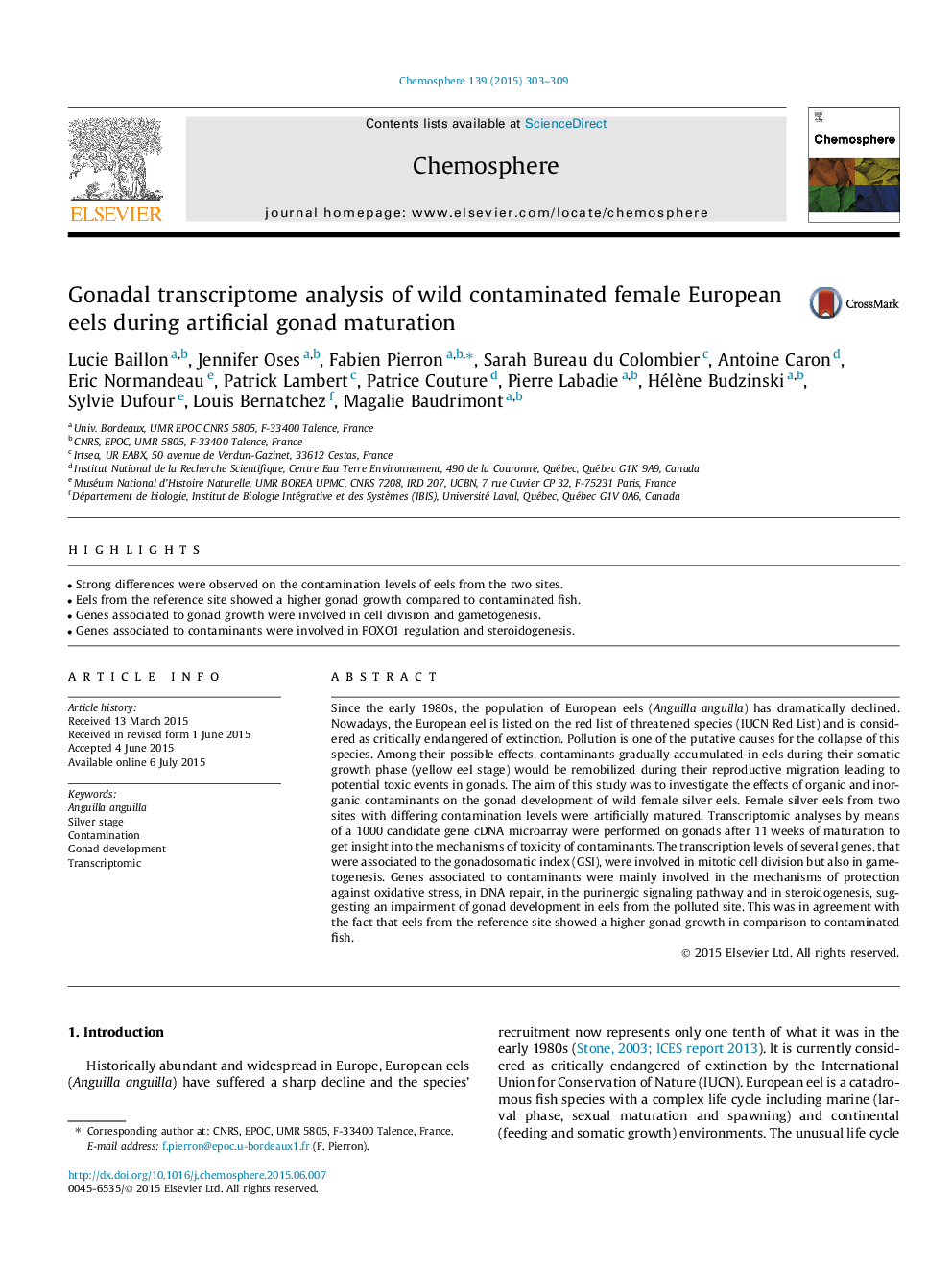| Article ID | Journal | Published Year | Pages | File Type |
|---|---|---|---|---|
| 4408160 | Chemosphere | 2015 | 7 Pages |
•Strong differences were observed on the contamination levels of eels from the two sites.•Eels from the reference site showed a higher gonad growth compared to contaminated fish.•Genes associated to gonad growth were involved in cell division and gametogenesis.•Genes associated to contaminants were involved in FOXO1 regulation and steroidogenesis.
Since the early 1980s, the population of European eels (Anguilla anguilla) has dramatically declined. Nowadays, the European eel is listed on the red list of threatened species (IUCN Red List) and is considered as critically endangered of extinction. Pollution is one of the putative causes for the collapse of this species. Among their possible effects, contaminants gradually accumulated in eels during their somatic growth phase (yellow eel stage) would be remobilized during their reproductive migration leading to potential toxic events in gonads. The aim of this study was to investigate the effects of organic and inorganic contaminants on the gonad development of wild female silver eels. Female silver eels from two sites with differing contamination levels were artificially matured. Transcriptomic analyses by means of a 1000 candidate gene cDNA microarray were performed on gonads after 11 weeks of maturation to get insight into the mechanisms of toxicity of contaminants. The transcription levels of several genes, that were associated to the gonadosomatic index (GSI), were involved in mitotic cell division but also in gametogenesis. Genes associated to contaminants were mainly involved in the mechanisms of protection against oxidative stress, in DNA repair, in the purinergic signaling pathway and in steroidogenesis, suggesting an impairment of gonad development in eels from the polluted site. This was in agreement with the fact that eels from the reference site showed a higher gonad growth in comparison to contaminated fish.
